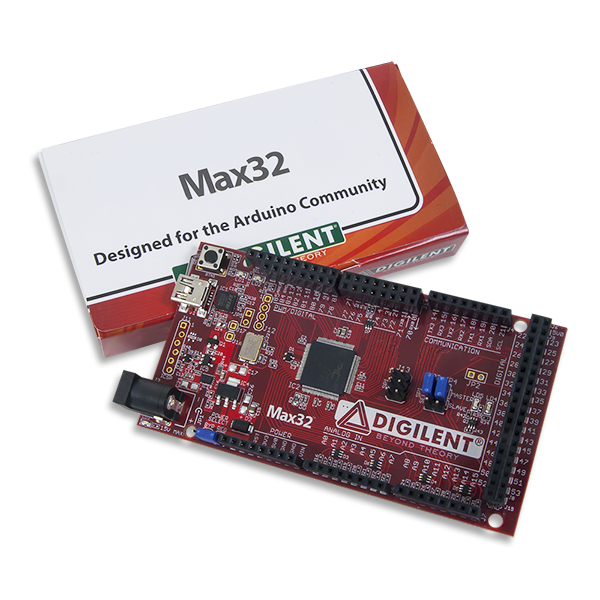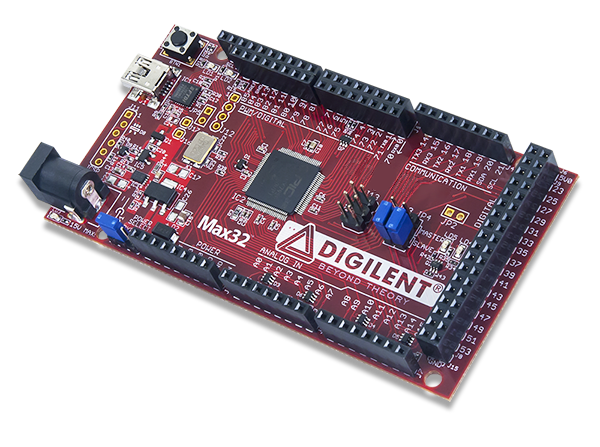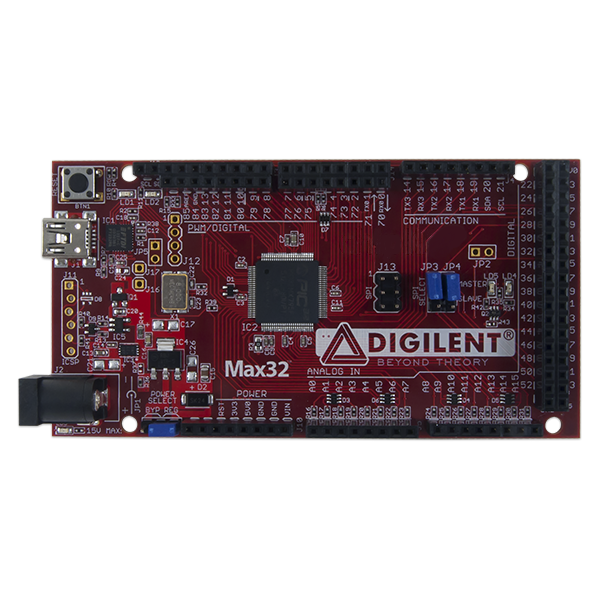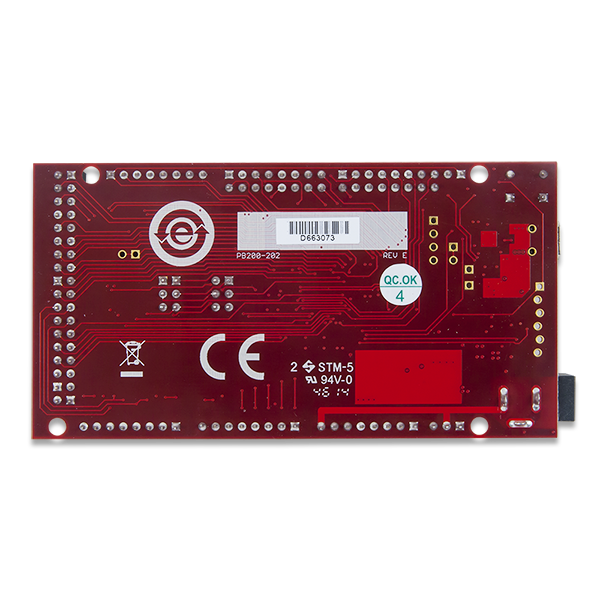Max32
- 83 available I/O
- 16-channel 10bit ADC, five compare/PWM outputs
- Dual CAN controllers
- 16 analog inputs
- 4 SPI Channels
- 5 I2C connectors
The Max32 is now retired and no longer for sale in our store.
The Max32 is a microcontroller board based on the Microchip PIC32MX795F512L, a member of the 32-bit PIC32 microcontroller family.
The Max32 is the same form factor as the Arduino™ Mega board and is compatible with many Arduino shields as well as larger shields for use with the Mega boards. It features a USB serial port interface for connection to the IDE and can be powered via USB or an external power supply.
The Max32 is easy to use and suitable for both beginners and advanced users experimenting with electronics and embedded control systems.
It was designed to be programmed using the Multi-Platform Integrated Development Environment (MPIDE), an environment based on the original Arduino IDE and modified to support PIC32. It contains everything needed to start developing embedded applications. The Max32 can also be programmed, and debugged, with Microchip's MPLAB® X IDE development tool using a licensed debugger/programmer such as the chipKIT PGM or the PICkit®3.
The Max32 has 83 I/O pins that support a number of peripheral functions, such as UART, SPI, and I2C ports and pulse-width modulated outputs. Sixteen of the I/O pins can be used as analog inputs or as digital inputs and outputs.
The PIC32 microcontroller on the Max32 also provides a 10/100 Ethernet MAC, USB 2.0 full-speed OTG controller, and two CAN controllers. An add-on board like the Network Shield is needed to use these advanced peripherals.
The Max32 can be powered via USB, an external AC-DC power adapter, or batteries.
Download this reference manual PDF




